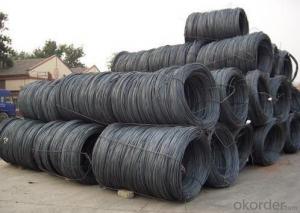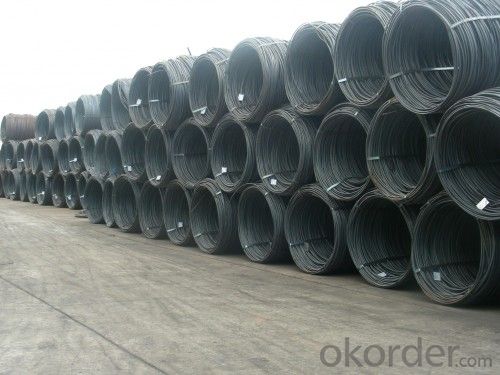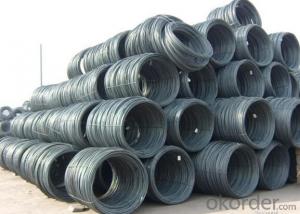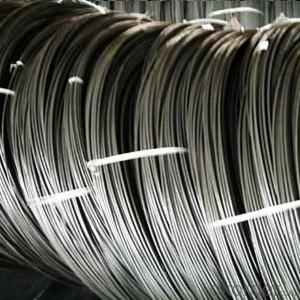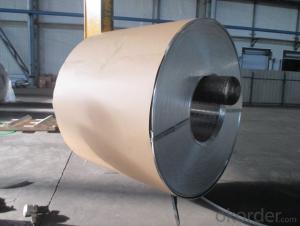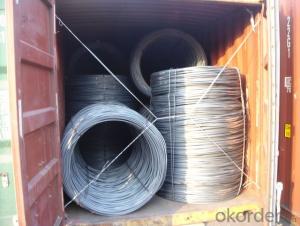Steel Wire Rod Coils Steel Hot Rolled Wire Rod Q195
- Loading Port:
- Tianjin
- Payment Terms:
- TT or LC
- Min Order Qty:
- 28 m.t.
- Supply Capability:
- 35000 m.t./month
OKorder Service Pledge
OKorder Financial Service
You Might Also Like
Product Description:
OKorder is offering Steel Wire Rod Coils Steel Hot Rolled Wire Rod Q195 at great prices with worldwide shipping. Our supplier is a world-class manufacturer of steel, with our products utilized the world over. OKorder annually supplies products to European, North American and Asian markets. We provide quotations within 24 hours of receiving an inquiry and guarantee competitive prices.
Product Applications:
Steel Wire Rod Coils Steel Hot Rolled Wire Rod Q195 are ideal for structural applications and are widely used in the construction of buildings and bridges, and the manufacturing, petrochemical, and transportation industries.
Product Advantages:
OKorder's Steel Wire Rod Coils Steel Hot Rolled Wire Rod Q195 are durable, strong, and resist corrosion.
Main Product Features:
· Premium quality
· Prompt delivery & seaworthy packing (30 days after receiving deposit)
· Corrosion resistance
· Can be recycled and reused
· Mill test certification
· Professional Service
· Competitive pricing
Product Specifications:
1.Hot-rolled steel wire rod for building/construction
2.Near the seaport,low logistic cost
3.High precision,5-12mm
Product |
wire rod |
| Standard | AISI, ASTM, BS, DIN, GB, JIS |
| Material/steel grade | Q195-Q235,SAE1006B, SAE1008B, SAE1010B, SAE1018B, or according to customers requirements |
| Wire Gauge | 5.5-12mm |
| Coil weight | 1.8-2.1mts |
| MOQ | 25MT |
| Delivery Time | 15-30 days after receipt of L/C or deposit by T/T |
| Packing | In coil and load in container, if large quantity, by bulk vessel; Can be packed as customers' special requirements |
| Payment terms | 1).100% irrevocable L/C at sight. 2).30% T/T prepaid and the balance against the copy of B/L. 3).30% T/T prepaid and the balance against L/C |
| Application | widely used in machinery parts, manufacturing industry, electronics industry, metal tools and others |
FAQ:
Q1: Why buy Materials & Equipment from OKorder.com?
A1: All products offered byOKorder.com are carefully selected from China's most reliable manufacturing enterprises. Through its ISO certifications, OKorder.com adheres to the highest standards and a commitment to supply chain safety and customer satisfaction.
Q2: How do we guarantee the quality of our products?
A2: We have established an advanced quality management system which conducts strict quality tests at every step, from raw materials to the final product. At the same time, we provide extensive follow-up service assurances as required.
Q3: How soon can we receive the product after purchase?
A3: Within three days of placing an order, we will begin production. The specific shipping date is dependent upon international and government factors, but is typically 7 to 10 workdays.
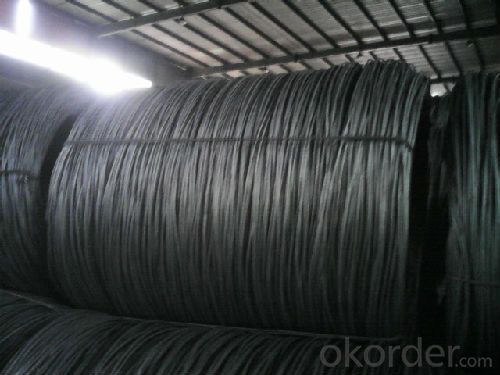

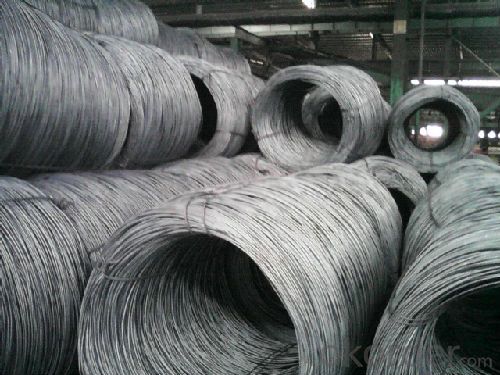

- Q: How is steel wire rod used in the manufacturing of wire forms for ski lifts?
- Steel wire rod is an essential component in the manufacturing of wire forms for ski lifts. These wire forms are responsible for providing the necessary support and strength to the ski lift system. Firstly, steel wire rod is used to create the primary cables that run along the ski lift structure. These cables bear the weight of the ski lift and its passengers, ensuring their safety and stability. The high tensile strength of steel wire rod is crucial in withstanding the heavy loads and stress that the ski lift system experiences during operation. Additionally, steel wire rod is utilized in the creation of the suspension cables that connect the ski lift cabins to the primary cables. These suspension cables play a vital role in keeping the cabins balanced and levelled while in motion. The durability and reliability of steel wire rod ensure that these suspension cables can withstand the constant movement and varying forces exerted on them. Moreover, steel wire rod is also used in the construction of safety cables that are installed as a precautionary measure. These safety cables act as a backup system, providing an additional level of security for the ski lift passengers. In case of any unforeseen event or malfunction, the safety cables ensure that the cabins remain securely attached to the primary cables, preventing any potential accidents. Overall, steel wire rod serves as the backbone of wire forms for ski lifts by providing the necessary strength, stability, and safety required for their operation. The quality and durability of steel wire rod play a crucial role in ensuring the reliability and longevity of ski lift systems, ultimately contributing to the safety and enjoyment of skiers and snowboarders.
- Q: What are the different corrosion protection methods for steel wire rod?
- Some of the different corrosion protection methods for steel wire rods include galvanization, coating with anti-corrosion paints or varnishes, applying rust inhibitors or corrosion inhibitors, using sacrificial anodes, and electroplating with a protective metal coating.
- Q: What are the different surface defects that can affect the magnetic properties of steel wire rod?
- Some common surface defects that can affect the magnetic properties of steel wire rod include surface roughness, scale formation, decarburization, and surface contamination. These defects can disrupt the magnetic domain alignment and reduce the overall magnetic strength of the wire rod.
- Q: How are steel wire rods used in the production of welding electrodes?
- The production of welding electrodes relies heavily on steel wire rods, which serve as vital components. These wire rods function as the central material for welding electrodes, supplying the essential strength and conductivity needed for welding. To initiate the production of welding electrodes, steel wire rods are carefully chosen based on their specific mechanical properties. These properties, such as tensile strength and elongation, guarantee that the welding electrodes can endure the demanding conditions of high temperatures and stress encountered during welding. The steel wire rods then undergo further processing through a series of steps. Initially, they are cleansed and coated with a flux material. This coating aids in the elimination of impurities and facilitates improved arc stability during welding. Moreover, the coating helps create a protective gas shield around the welding area, preventing oxidation and contamination. Once the coating process is complete, the steel wire rods are cut into predetermined lengths and shaped according to the desired electrode design. This may involve bending or forming the rods to achieve the required shape and size for the welding electrode. Once the welding electrode is shaped, it is packaged and prepared for distribution and use. These electrodes find extensive applications in various industries, including construction, automotive, and manufacturing, where they are utilized for welding tasks like metal joining, machinery repair, and structure fabrication. In conclusion, steel wire rods play a critical role in the production of welding electrodes, providing the necessary strength, conductivity, and formability required for these electrodes to effectively carry out welding processes.
- Q: How is steel wire rod used in the manufacturing of wire baskets for industrial applications?
- Steel wire rod is an essential raw material used in the manufacturing of wire baskets for industrial applications. The wire rod serves as the base material from which the wire baskets are formed. To begin the manufacturing process, the steel wire rod is first carefully selected and inspected for its quality and specifications. It is important for the wire rod to have the desired strength, flexibility, and durability required for industrial applications. Once the wire rod meets the necessary standards, it is then subjected to various processes to transform it into wire baskets. The first step in the manufacturing process involves drawing the steel wire rod through a series of dies to reduce its diameter and increase its length. This process is known as wire drawing. The wire drawing process helps in improving the wire rod's surface finish, strength, and dimensional accuracy. After wire drawing, the steel wire rod is then further processed through various techniques such as annealing, cleaning, and coating. Annealing helps to relieve any internal stresses in the wire and enhance its ductility, making it easier to form into wire baskets. Cleaning removes any impurities or contaminants from the wire rod's surface, ensuring a clean and smooth finish. Coating involves applying a protective layer on the wire rod to prevent corrosion and enhance its durability. Once the wire rod is prepared, it is ready to be formed into wire baskets. The wire rod is fed into a machine called a wire basket forming machine, where it is bent, twisted, and shaped into the desired basket design. The machine uses various mechanisms, such as rollers and dies, to mold the wire rod into the required shape and size. After the wire rod has been formed into wire baskets, they undergo further processes such as welding, cutting, and finishing. Welding is used to join the different sections of the wire basket together, ensuring its structural integrity. Cutting is performed to trim any excess wire and achieve the desired dimensions. Finally, the wire baskets are finished by removing any sharp edges, polishing the surface, and applying any required surface treatment or coating. In summary, steel wire rod plays a crucial role in the manufacturing of wire baskets for industrial applications. It serves as the primary material from which the wire baskets are formed, and its properties are vital in determining the strength, durability, and overall quality of the final product. Through a series of processes, the wire rod is transformed into wire baskets, which are then used in various industrial applications such as storage, transportation, and organization of goods.
- Q: What are the common alloying elements added to steel wire rod?
- The common alloying elements added to steel wire rod include carbon, manganese, silicon, and sometimes other elements such as chromium, nickel, and molybdenum.
- Q: How is steel wire rod used in the manufacturing of cables and wires?
- Steel wire rod is an essential component in the manufacturing of cables and wires due to its exceptional strength and durability. It serves as the base material for the production of various types of cables and wires used in a wide range of industries. In the manufacturing process, steel wire rod is first drawn through a series of dies to reduce its diameter and increase its length. This process, known as wire drawing, helps to refine the steel wire rod and improve its mechanical properties. The wire is then subjected to various treatments such as annealing or heat treatment to further enhance its strength and flexibility. Once the steel wire rod has been properly processed, it is ready to be used in the production of cables and wires. The wire is typically coated with materials such as plastic or rubber to provide insulation and protection against moisture, chemicals, and other external factors. This coating also helps to improve the overall performance and longevity of the cables and wires. Steel wire rod is used in the manufacturing of a wide range of cables and wires, including electrical cables, communication cables, and structural cables. Electrical cables, for example, are used to transmit electricity and are commonly found in power grids, buildings, and appliances. Communication cables, on the other hand, are used for data transmission and are widely used in telecommunications and networking systems. In addition to its strength and durability, steel wire rod offers excellent conductivity, making it an ideal choice for applications that require efficient electrical or data transmission. It is also cost-effective compared to other materials, making it a popular choice for cable and wire manufacturers. Overall, steel wire rod plays a crucial role in the manufacturing of cables and wires, providing the strength, durability, and conductivity required for various applications. Its versatility and reliability make it an indispensable component in the production of high-quality cables and wires used in various industries.
- Q: How is steel wire rod used in the production of suspension springs for marine vessels?
- Steel wire rod is used in the production of suspension springs for marine vessels as it provides the necessary strength and durability required to withstand the harsh conditions and heavy loads experienced by these springs. The steel wire rod is formed into coils and then further processed to create the desired shape and size of the suspension springs. These springs are then installed in the suspension system of marine vessels to absorb shocks and vibrations, ensuring smoother and more stable navigation in rough sea conditions.
- Q: What are the environmental considerations of steel wire rod production?
- The environmental considerations of steel wire rod production include the extraction and processing of raw materials, such as iron ore and coal, which can contribute to habitat destruction and greenhouse gas emissions. The energy-intensive manufacturing process can also generate air and water pollution, as well as waste materials that require proper disposal. Additionally, the transportation of steel wire rods adds to carbon emissions. However, efforts are being made to reduce the environmental impact through the use of more sustainable practices, such as recycling steel scrap and implementing cleaner production technologies.
- Q: How are steel wire rods used in the production of wire ropes for heavy lifting?
- Steel wire rods are used in the production of wire ropes for heavy lifting by being drawn through dies to form individual wire strands, which are then twisted together to create a strong and durable rope. The high tensile strength of steel wire rods ensures that the resulting wire ropes can withstand the heavy loads and provide reliable lifting capabilities in various industries.
Send your message to us
Steel Wire Rod Coils Steel Hot Rolled Wire Rod Q195
- Loading Port:
- Tianjin
- Payment Terms:
- TT or LC
- Min Order Qty:
- 28 m.t.
- Supply Capability:
- 35000 m.t./month
OKorder Service Pledge
OKorder Financial Service
Similar products
Hot products
Hot Searches
Related keywords
